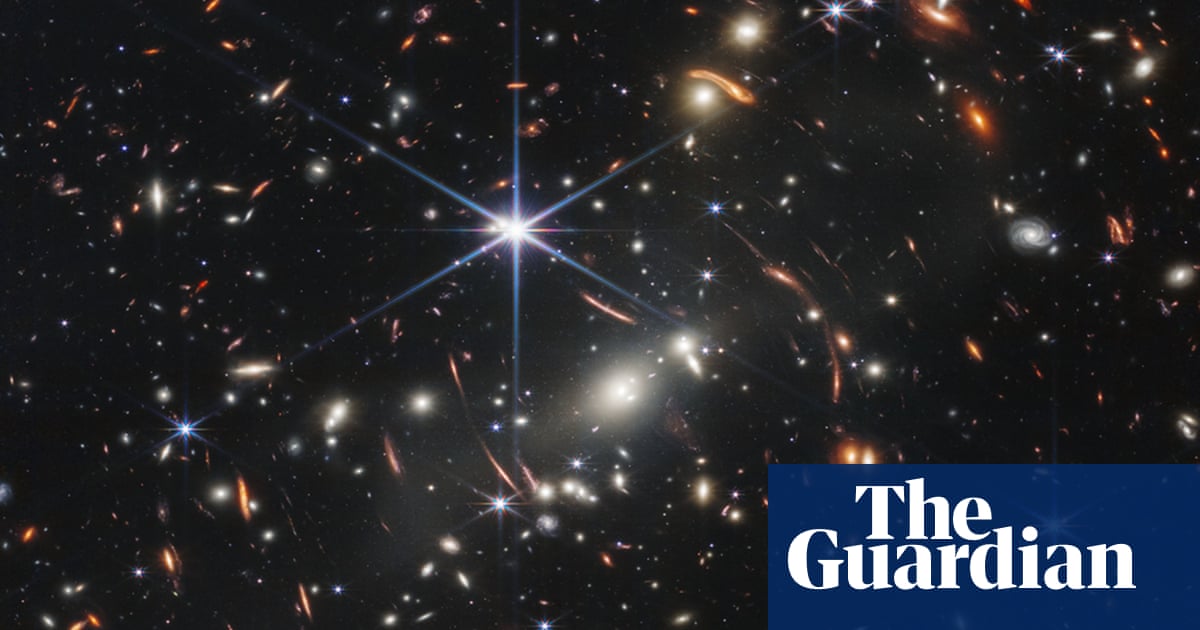
Astronomers have detected carbon in a galaxy observed just 350m years after the big bang, in observations that raise the possibility that the conditions for life were present almost from the dawn of time.
The observations, made by the James Webb space telescope, suggest that vast amounts of carbon were released when the first generation of stars exploded in supernovae. Carbon is known to have seeded the first planets and is a building block for life as we know it, but was previously thought to have emerged much later in cosmic history.
“This is the earliest detection of an element heavier than hydrogen ever obtained,” said Prof Roberto Maiolino, an astronomer at the University of Cambridge and a co-author of the findings. “It’s a massive discovery.”
“The finding of a large amount of carbon in such a distant galaxy implies that life could have potentially emerged very early in the universe, really close to cosmic dawn.”
The very early universe was almost entirely made up of hydrogen, helium and tiny amounts of lithium. Every other element – including those that formed the Earth and humans – was formed in stars and released during supernovae, when stars explode at the end of their lives. With every new generation of stars, the universe was enriched with progressively heavier elements until rocky planets formed and life became a possibility.
Carbon is a fundamental element in this process, since it can clump into grains of dust in a swirling disc around stars, eventually snowballing into the earliest planets. It was previously thought that carbon enrichment occurred about 1bn years after the big bang.
The latest research dates the earliest carbon fingerprint to just 350m years, suggesting that carbon was released in large quantities in the supernovae of the very first generation of stars in the universe. This doesn’t change estimates for when life began on Earth, about 3.7bn years ago, but suggests some of the criteria for life emerging elsewhere in the universe was present far earlier than expected.
“The very first stars are the holy grail of chemical evolution, since they are made only of primordial elements, and they behave very differently to modern stars,” said Dr Francesco D’Eugenio, an astrophysicist the Kavli Institute for Cosmology at Cambridge and the lead author of the findings. “By studying how and when the first metals formed inside stars, we can set a time frame for the earliest steps on the path that led to the formation of life.”
The galaxy, which is the fifth most distant ever observed, is small and compact – about 100,000 times smaller than the Milky Way. “It’s just an embryo of a galaxy when we observe it, but it could evolve into something quite big, about the size of the Milky Way,” said D’Eugenio. “But for such a young galaxy, it’s fairly massive.”
An analysis of the spectrum of light coming from the galaxy gave a confident detection of carbon and tentative detections of oxygen and neon. “From carbon to DNA is a huge journey, but this shows those key elements are, in principle, already there,” said Maiolino.
after newsletter promotion
Dr Rafael Alves Batista, an astrophysicist at Sorbonne University, Paris, who was not involved in the latest findings, said: “The result is a big leap forward and is something that we didn’t know before.”
However, he said it was not possible to extrapolate from the detection of carbon the likelihood of life emerging. “That is not a jump I’d make,” he said. “Most of these [early] stars are too massive so they die too fast. Even if there are planets, I’m not very optimistic that they would have the conditions for life. The findings are very interesting, but I don’t think they’re sufficient to settle anything.”
The findings are due to be published in the journal Astronomy & Astrophysics.
Source: theguardian.com



